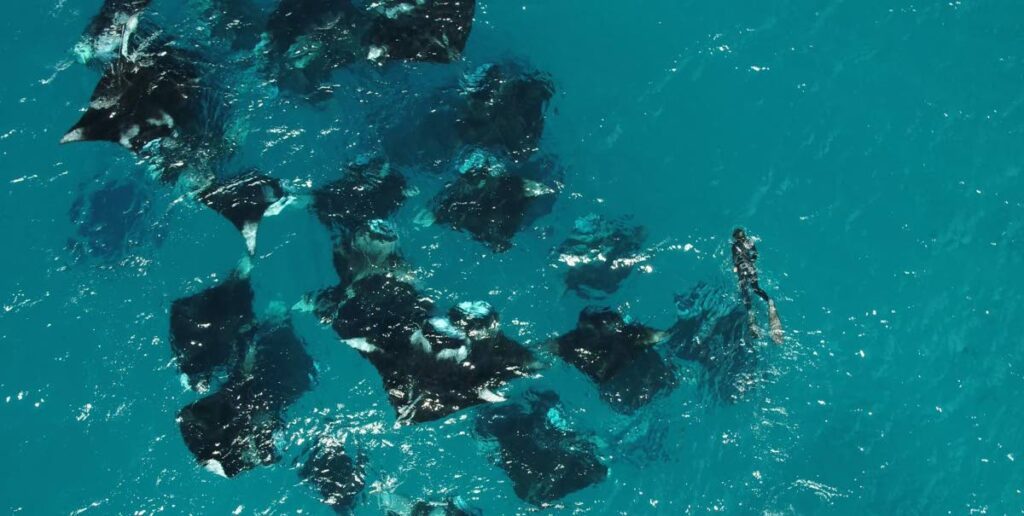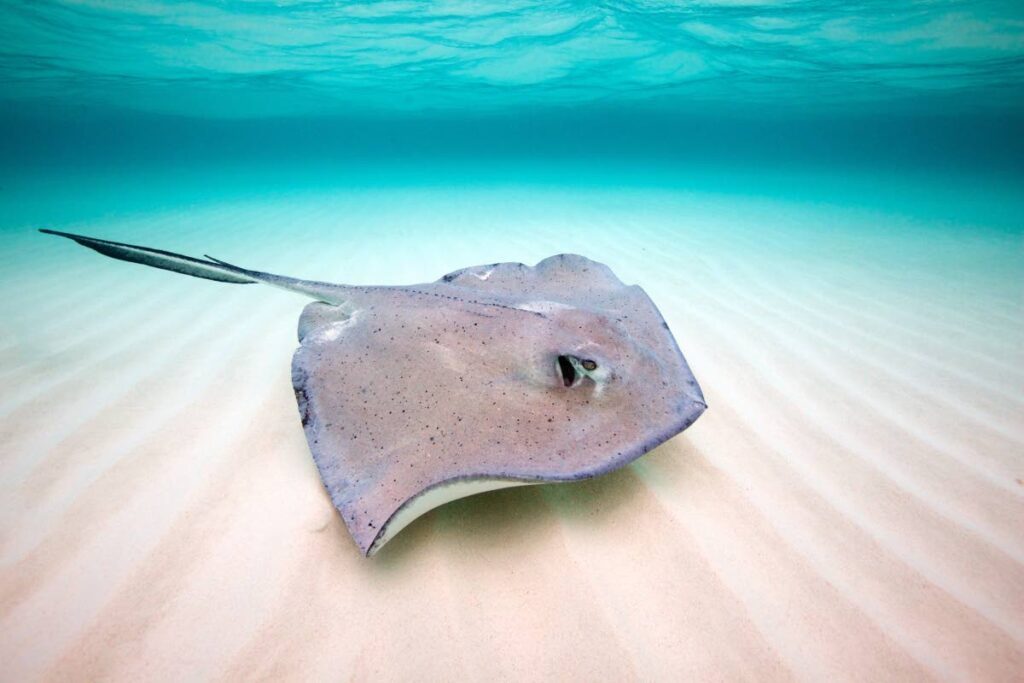Looking for rays

When last did you see a ray at the beach? Farahnaz Solomon, marine biologist and fisheries expert, tells us about these mysterious creatures and asks us to look for skates and rays in our waters.
Trinidad and Tobago may be home to as many as 30 species of globally threatened skates and rays. What do we know about them? How can we appreciate and protect them in our waters?
Local NGO and advocate for marine life SpeSeas has started a project aimed at unravelling the mysteries of rays: just how many species are there and where exactly do they live?
Some of us have heard fishermen’s tales of the majestic manta – sometimes called devil ray – often sighted out at sea. Some of us have seen the southern stingrays and spotted eagle rays on the reefs or at the beach. And a few have witnessed the fevers (a collection of rays is called a fever) of cownose rays migrating along the coast.
Skates and rays are fishes that are closely related to sharks. They are often referred to as “flat sharks” because of their flattened (pancake-like) bodies. Scientifically known as batoids, many skates and rays actually do look like bats flying through the water.

Skates, rays, and sharks all have skeletons made of cartilage – the soft flexible material at the tip of our ears. This is unlike the common fish that we eat (eg carite and kingfish), which have bony skeletons.
Skates and rays also have greatly expanded wing-like fins that are fused to the sides of the head, eyes on top the body, and mouth and gill slits on the underside of the body.
Skates and rays are important for healthy oceans. Most live on or near to the seafloor, feeding on small marine organisms close to or in the sediment. While looking for prey, they stir up the sediment, promoting oxygen penetration and nutrient cycling, and create small depressions which serve as habitats for other organisms. This stirring up of the sediment also makes buried prey accessible to other predators.
Most skates and rays are mesopredators – they are both predator and prey – linking apex predators such as large sharks, to lower feeding levels in the food web. Skates and rays are important as food in many countries, and are valued for by-products such as medicine, leather and curios.
Encounters with large rays become memorable moments for divers, and marine wildlife tourism involving skates and rays contribute significantly to livelihoods and local economies in some regions. Observing stingrays is a popular attraction in the Cayman Islands and the Bahamas; and in Tobago, they have been seen in Castara.
Skates and rays grow slowly, and exhibit late sexual maturity, long pregnancies, and low fertility. These are characteristics that make them extremely vulnerable to threats such as overfishing, bycatch, habitat loss and degradation, pollution and climate change. Many skates and rays are globally threatened. In a recent global assessment, 36 per cent (220) of the 611 species were threatened with global extinction.
It turns out that there may be as many as 30 species of skates and rays living in TT waters. The presence of 16 species – 13 rays and three skates – is certain. The remaining 14 – seven rays and seven skates – are either uncommon or deepwater species, which requires more research to confirm. Historical records also indicate that two critically endangered sawfishes were once found in our waters, but both are now locally extinct.
The reality for the skate and ray species living in subtropical and tropical waters, like ours, is also concerning. Among the 16 skates and rays, nine are threatened with global extinction – meaning that they have been assessed as critically endangered, endangered or vulnerable by the IUCN Red list of threatened species. Among these, two are critically endangered – the sharpsnout ray and smalleyed round stingray; and four are endangered – the chola guitarfish, the Caribbean whiptail stingray, the spotted eagle ray, and the giant oceanic manta.

All except the oceanic manta favour nearshore coastal habitats, and six occur at depths between zero and 80 metres, making them vulnerable to human interactions.
While skates and rays are not targeted or fished locally, several are caught accidentally in trawls, beach seines, gillnets, and hook and line. Accidental catches are either released or retained for personal use or commercial sale.
Social media posts and personal observations are hinting at a worrying increasing trend of retention of larger rays for commercial sale.
None of this catch data is collected by the local fisheries authorities, which contributes to a lack of understanding and poor management of local skate and ray populations.
The year-long SpeSeas project aims to:
document their occurrence and diversity in our waters using local knowledge, photographic records, and observations, including incidental capture in fisheries;
survey fishers’ knowledge, practices, and perception concerning rays; and
raise awareness among local communities and fishers on the critical importance of this group.
To learn more about this project, visit SpeSeas’ on Instagram, Facebook or LinkedIn.


Comments
"Looking for rays"